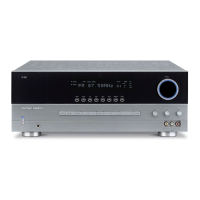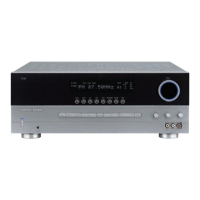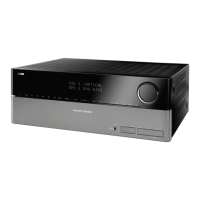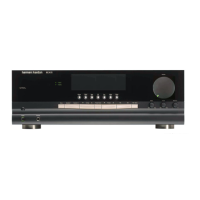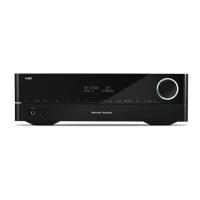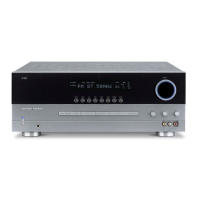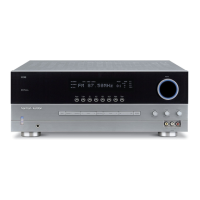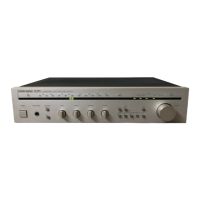Do you have a question about the Harman Kardon HK 3390 and is the answer not in the manual?
Crucial instructions for safe operation, including warnings and precautions.
Guidelines for wet locations, service, outdoor use, and general warnings.
Guidance on voltage verification, cord handling, installation location, and cleaning.
Details on FCC compliance, unpacking, and user responsibilities.
Details on the HK 3390 Stereo Receiver, its audio capabilities, and design philosophy.
Lists of audio/video inputs, outputs, ease of use features, and supplied accessories.
Controls for powering the unit and selecting audio/video sources.
Controls for speaker output selection, radio tuning, and preset station management.
Controls for volume, tone, balance, sleep timer, dimmer, and headphone jack.
Connections for AM/FM antennas and audio/video inputs from source devices.
Jacks for audio/video outputs, remote IR input/output, and subwoofer trigger connections.
AC power input, speaker outputs, switched outlets, and internal audio connections.
Buttons for selecting controlled devices and fundamental functions like power and source.
Functions for tuning radio stations, auto-preset, direct entry, and memory storage.
Controls for volume, mute, dimmer, sleep timer, and playback functions.
Methods for tuning stations and selecting presets using the remote's tuning controls.
Controls for playback, fast search, dimmer, repeat, and sleep timer functions.
Guidance on connecting speakers and subwoofers, including polarity and trigger outputs.
How to connect various audio and video source components to the receiver.
Details on connecting analog audio (RCA) and composite video signals.
Instructions for connecting FM and AM antennas for optimal tuner performance.
Recommendations for placing front speakers and subwoofers for best sound quality.
Steps for connecting speakers, subwoofer, antennas, and source components.
Guidance for connecting Phono, CD, Tape, and Video 1 source components.
Instructions for connecting Video 2 and Video 3 sources, including iPods.
Connecting the video display and optional external IR receivers/emitters.
Connecting optional external equipment, plugging in power, and turning on the unit.
Turning the unit on/off, using the volume control, and mute function.
Setting the sleep timer and adjusting bass, treble, and balance controls.
Switching between connected sources and selecting speaker pairs.
Tuning radio stations and using the headphone jack for private listening.
Methods for tuning stations, programming presets, and using Auto Preset.
Procedures for making recordings and adjusting the front panel display brightness.
Resetting the unit to factory defaults and understanding memory retention.
Solutions for problems related to unit power, display lights, and sound.
Troubleshooting intermittent buzzing, distorted audio, and remote unresponsiveness.
Solutions for no video image and incorrect audio source connections.
Detailed technical data for the audio section and AM/FM tuner.
Technical data for video section, power requirements, dimensions, and weight.
Table mapping source inputs to compatible remote control device types.
Table detailing subwoofer link switch status and speaker signal effects.
Comprehensive table listing remote buttons and their functions for various devices.
| Impedance | 8 Ω |
|---|---|
| Receiver type | stereo |
| Frequency range | 20 - 20000 Hz |
| Input sensitivity | 200 mV |
| Audio output channels | 2.1 channels |
| Signal-to-Noise Ratio (SNR) | 95 dB |
| Total Harmonic Distortion (THD) | 0.4 % |
| Power output per channel (20-20KHz@8 Ohm) | 80 W |
| HDMI in | 0 |
| Speakers connectivity type | - |
| Ethernet LAN | No |
| Supported radio bands | AM, FM |
| Radio Data System (RDS) | Yes |
| Preset stations quantity | 30 |
| Product color | Black |
| Apple docking compatibility | Not supported |
| AC input voltage | 230 V |
| AC input frequency | 50 Hz |
| Power consumption (standby) | 1 W |
| Power consumption (typical) | 230 W |
| Depth | 382 mm |
|---|---|
| Width | 440 mm |
| Height | 165 mm |
| Weight | 9500 g |

